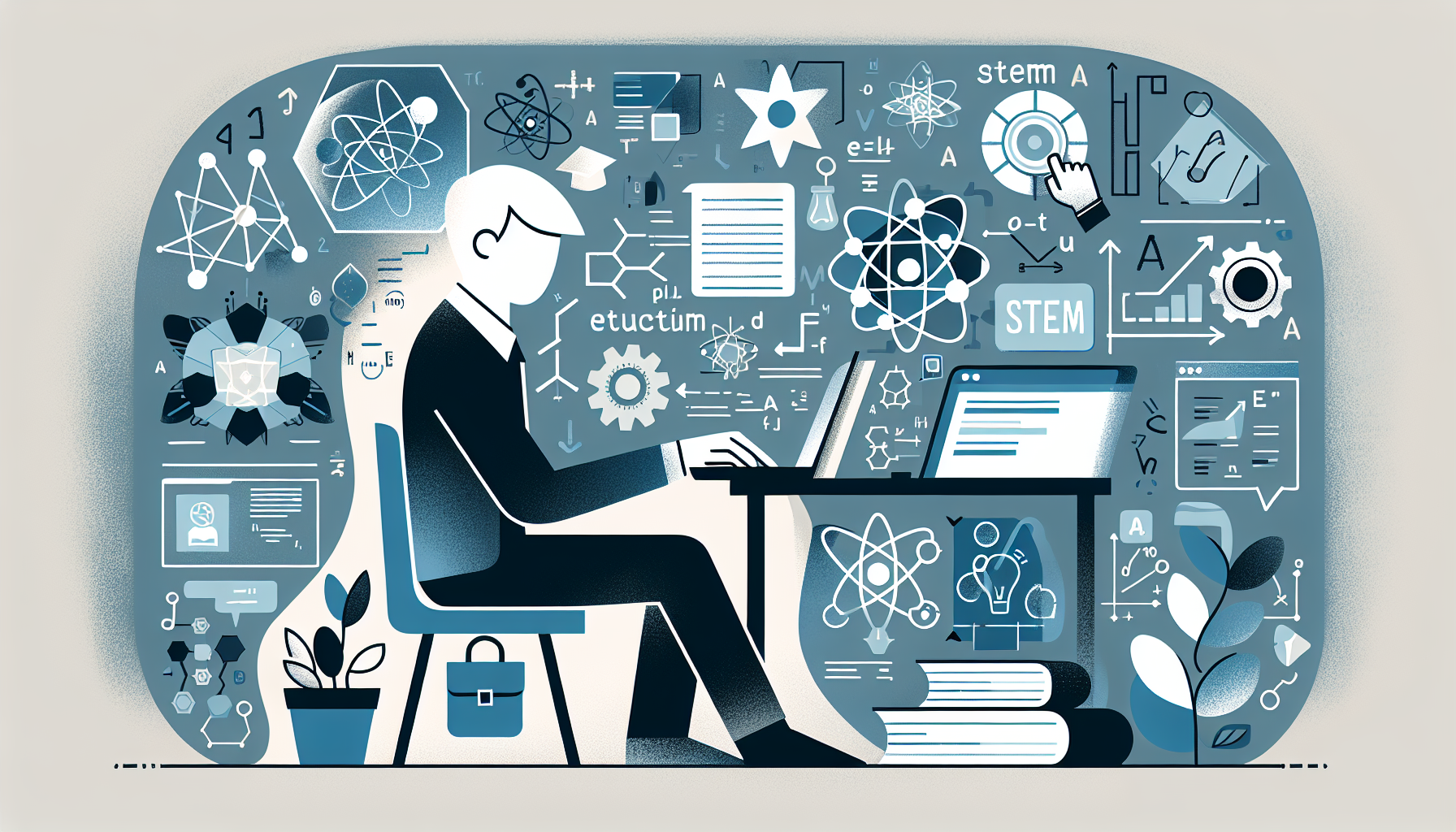STEM study tips for college students encompass mastering core concepts, aligning study techniques with course requirements, managing stress during exams, and utilizing tech tools for enhanced learning, all aimed at improving comprehension, performance, and overall academic achievement in technical disciplines.
STEM study tips for college students can turn the academic tide when challenging courses feel overwhelming. Whether it’s calculus equations or physics concepts, mastering these subjects takes more than just hard work. Discover insightful strategies that effortlessly boost performance and confidence in this journey.
Mastering STEM Conceptually: The Key To Exam Success
Understanding STEM subjects goes beyond memorizing formulas and definitions. It involves grasping fundamental concepts and their real-world applications. This approach not only prepares you to tackle exams but also helps in solving complex problems effectively.
Identifying Core Concepts
Begin by identifying the core concepts of each subject. Use resources such as textbooks, online tutorials, and lecture notes to gain a deeper understanding. Ask yourself how each concept connects to others and what role it plays in the overall subject.
Utilizing Visual Aids
Visual aids like diagrams, flowcharts, and models can be powerful tools. They help in visualizing abstract concepts and understanding their interconnections. Studies show that visual learning can enhance memory retention and comprehension.
Practicing Application
Apply what you have learned by engaging in practical exercises, such as lab experiments, simulation programs, or real-world problem-solving scenarios. This hands-on practice reinforces conceptual understanding and increases readiness for exams.
Aligning Your Study Methods With Your Course

Matching your study methods to the demands of your course can significantly impact your understanding and performance. Each course might require different strategies depending on its structure and assessment type. By tailoring your study approach, you can optimize your learning experience.
Understanding Course Requirements
Begin by reviewing your course syllabus and identifying key areas that need attention. This includes understanding the types of assessments you’ll face, whether they are tests, projects, or presentations. Recognizing these will help you plan your study schedule effectively.
Choosing the Right Study Techniques
Different subjects may benefit from specific study techniques. For example, active recall works well for subjects heavy on memorization, like biology, whereas practice problems are crucial for math and physics. Adjust your methods based on what helps you best retain information.
Utilizing Course Materials
Leverage all available resources provided by your course, such as textbooks, online portals, and supplementary readings. Engaging with these materials not only aids in understanding but also ensures you don’t miss out on critical course content.
Finally, don’t hesitate to reach out to instructors for guidance on focusing your efforts or to clarify any confusing topics. Remember, aligning your study methods with your course is a dynamic process and may require adjustments as you progress.
Stress Management Tips During Finals For STEM Students
Managing stress during finals can be challenging, especially for STEM students juggling complex subjects. Effective stress management can improve focus, enhance performance, and promote well-being.
Establishing a Balanced Schedule
Creating a study schedule that includes regular breaks is crucial. Divide your study sessions into manageable blocks and take short breaks in between. This helps increase productivity and prevents burnout.
Mindfulness and Relaxation Techniques
Incorporate mindfulness practices like deep breathing, meditation, or short walks to clear your mind. These techniques can reduce anxiety and improve your ability to concentrate.
Healthy Lifestyle Choices
Ensure that you get adequate sleep, eat nutritious meals, and stay hydrated. A healthy body supports a healthy mind, which is essential for managing stress effectively.
Having a support system can also make a big difference. Connect with friends or study groups to share experiences and encourage each other. Remember that finding the right stress management strategies requires practice and patience.
Leveraging Tech Tools For Enhanced STEM Learning

Tech tools can significantly enhance STEM learning by providing interactive and engaging ways to explore complex concepts. Understanding how to effectively use these tools can transform the study experience.
Utilizing Educational Apps
Many educational apps offer features like interactive problem-solving and simulated lab experiments. Apps such as Khan Academy or Wolfram Alpha provide resources for understanding difficult topics at your own pace.
Engaging with Online Platforms
Platforms like Coursera and edX offer courses from top universities on various STEM subjects. These platforms provide video lectures, quizzes, and assignments that simulate real university courses, helping to deepen your knowledge.
Incorporating Productivity Software
Software like Microsoft OneNote or Google Workspace can help organize notes, manage projects, and collaborate with peers. Use these platforms to set study schedules, share information, and track your progress.
Integrating tech tools into studying not only makes learning more manageable but also prepares students for a technology-driven world where digital proficiency is essential.
Wrapping up STEM Study Tips
Mastering STEM subjects in college is all about finding the right balance and tools. From understanding core concepts to aligning study methods with courses, each step builds a comprehensive learning strategy.
Managing stress during finals and leveraging tech tools are also vital components. These strategies help you stay focused, reduce anxiety, and enhance your learning experience.
By integrating these tips, STEM students can achieve success not just in exams, but also in their overall educational journey, preparing themselves for a technology-driven future.










